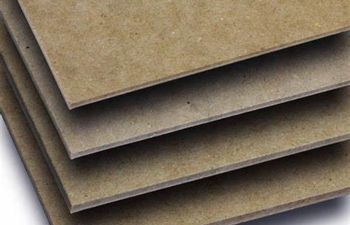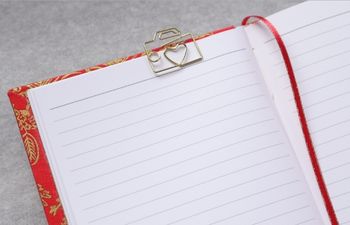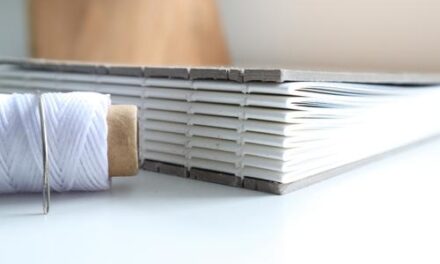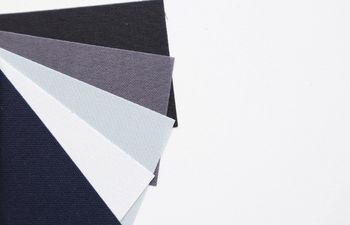Book board is used to make the covers of a book. You might hear it called “binder board”, “Davey board” or “museum board”. While these are all good book boards for binding, each of them have differences. I’ll explain the differences, including thickness and application, while also giving you extra nerdy data in table format because…why not.
What is binder’s board, anyway?
At it’s most simple, book binder’s board is a high quality, strong-yet-flexible and acid-free sheet of pressed organic material (wood pulp or cotton fibers, primarily). The quality of the final board depends on the manufacturing process used to make it. I’ll talk more about this below.
Most popular types of binding board + definitions
- Binder’s board – for many, this term refers to any pressed board used to make books. In reality, “binder board” is synonymous with chipboard. Chipboard is very different from true book board, so it’s worth noting. You can learn more about the differences between chipboard and Davey board in my post on the topic, Davey vs. Chipboard: Which One is Better for Bookbinding?.
- Museum board – this type of board is made from cotton fibers (usually 100%) and is firm, flexible and of the highest archival (acid-free) quality. It comes in a number of different ply (from single ply all the way up to 8-ply), so there are many options to fit your needs. Typically, museum board is used for framing and book restoration/conservation activities.
- Davey board – this is a high quality, superior book board that has a strong corner crush resistance while remaining flexible enough to support the weight of various book sizes. It is also of archival quality and, due to its strength, can support many different book sizes from very small to very large.
Book board basics
Book board thickness, raw materials (cotton, wood pulp) and uses are some good-to-know board basics. I’ll cover these first and then get into thickness and application.
Archival quality
First, a quick heads up…everyone in the bookbinding world is crazy about archival quality everything. “Archival” or “pH neutral” just means “acid-free.” Acid-free is important for the long haul. If you want your books, boxes and other paper creations to last a long time, you’ll want the materials they’re made of to be acid-free. Otherwise, the materials will yellow, turn spotty, become brittle and break down over time. This is bad. Very bad.
Various ply (single ply, 2-ply, etc.)
Book board is made up of layers of thick paper. Some are on the thin side (single to 2-ply) and others are thick (4-8 ply) to make them sturdy. 2-ply boards have two layers of thick paper while 4-ply boards have four, and so on.
Generally, book makers prefer 2, 3 and 4-ply thickness.
Cotton fibers vs. wood pulp
Book board made from cotton is often called Museum board. These boards are softer (read: much easier to cut) and can be found in most art supply stores. Don’t be fooled, though – just because they’re “softer” doesn’t mean they’re not strong. In fact, museum board is available in thicknesses ranging from single ply all the way up to 8-ply!
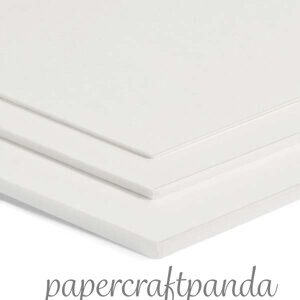
Book board made from wood pulp is called Davey board (can also be called Binder’s board). This board is buffered and harder (read: not as easy to cut). It’s perfect for books up to 12 inches tall. If your book is taller than 12 inches, it is recommended that you glue a couple of Davey boards together to get the right thickness.
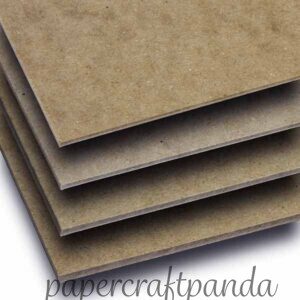
Cover boards vs. spine boards
Boards are used for both book covers and spines, but spine boards (also called “spine strips”) are usually thinner than the cover board. Choosing the right thickness for your spine strip is important because it adds balance. Read more about this in my post on the topic, Create Visual Balance with the Right Spine Strip.
Other boards
- Illustration or Bristol board. These boards are good for the spine because they’re a bit thinner. Just make sure to look for “all cotton” or “acid-free” because these boards sometimes have a backing that’s not acid-free. Sneaky, sneaky.
- Green Millboard. This is an eco-friendly board of the highest archival quality, which is best for restoration projects as they’re a bit spendy.
- Grey board. Also known as “greyboard”, this type of board is made entirely from recycled paper pulp. As you might have guessed, the name comes from the final color. While this board is strong and can be found in hardcover books, it is typically used for mounting paintings and prints as well as box and model building.
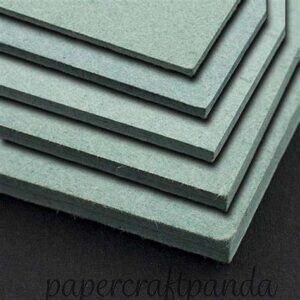
mm, calipers, inches, points – oh my!
Board thickness is given in mm, calipers, inches or points depending on where you are in the world. I made a table to help with equivalents because I am very helpful ? and these things can be confusing!
| millimeters | calipers | inches | points |
|---|---|---|---|
| 1.7 | 0.067 | 0.06 | ~68 |
| 1.9 | 0.074 | 0.07 | ~74 |
| 2.1 | 0.082 | 0.09 | ~80 |
Board thickness vs. book size
Now that we have a good understanding of book boards, let’s talk about board thickness vs. book size.
It’s pretty simple – smaller books need thinner boards. Bigger books need thicker boards.
It all comes down to making sure the book has thick enough covers to support its overall weight. I made another helpful table to give you some guidelines on picking the right board thickness for your project:
| Book Examples | Book Size | Best Board Type | Best Board Thickness |
|---|---|---|---|
| Children’s books, travel & tasting journals | Small – 6″ or less (A6) | Museum or Davey | 0.06 in. |
| Journals, standard books | Medium – 6″ – 9″ (A5, B5) | Davey | 0.07 in. |
| Photo albums, scrapbooks, sketchbooks | Large – 10″ – 11″ tall (A4) | Davey | 0.07 – 0.09 in. |
| Tomes, grimoires, scrapbooks, sketchbooks | XLarge – 12″ tall (A4) | Davey | 0.09 – 0.10 in. (or 0.06 in. x 2) |
| Specialty books | XXLarge – 12″ + tall (A3, B4 and larger) | (2) Davey boards glued per cover (4 total) | 0.09 – 0.10 x 2 per cover |
Where do I start?
All of this information is great, but the facts are just that…facts. As a new bookbinder, it can be hard to translate those facts into a decision when you’re not even sure where to begin. I totally understand.
I remember begging a fellow binder to just TELL ME what to buy. I’m serious. I literally said to her, “This is awesome, but please….just tell me what to buy! Where do I start??” If this is you, welcome to the club!
If you’re just getting into bookbinding and want to make a simple book for family (example: sketch books for the grandkids), I can definitely recommend a good beginner’s board.
I personally used a Lineco acid free binder’s board when I got started. I still use it today for various projects. This board is neutral in acidity (not acid-free, read up on that here), which makes it a great starter choice.
The Lineco binder’s board package includes 4 sheets of size 15″ x 20.5″ at a thickness of 0.067. This will give you plenty of board for various sizes, but you will need to cut it down yourself using an Olfa knife or similar. This particular board is a great starting thickness (less than 0.07), so it should be easier on your wrists.
As of the date of this article, Blick Art Materials has the best price (around $22 or so per package), but keep an eye out for other retailers who might offer free shipping. Remember – this size may ship with oversized fees from some retailers, so keep that in mind.
I hope this information was helpful for you! Good luck!
More bookbinding goodness
✨ What tools do I need to get started bookbinding?
- Bookbinding Tools & Supplies Quick Start Guide – learn all about book making tools, which to buy first & where to go online
- Pick up my popular Complete Starter Bookbinding Tools Kit – all the bookbinding essentials in one spot
🌟 Looking for a simple way to start making books?
Try a Complete Book Materials Kit. Each one has everything you need (+ tutorials & videos) to make a beautiful book without all the fuss.
Thank you for taking me along on your book making journey!
Misty
